Costa Brava is home to the only via ferrata in Europe by the sea: via ferrata Cala del Molí.
Whether you’re a rock-climbing expert or a newbie wanting to try climbing, this is the perfect place for an exciting adventure. Astonishing views over the Mediterranean Sea are guaranteed!
This via ferrata is located in the coastal town of Sant Feliu de Guíxols, in Costa Brava. The route is 480 meters long and can go as high as 20 metres, offering an impressive panoramic view of the Costa Brava. All in all, it’s the perfect activity for an active half-day.
Ready to know more about this via ferrata adventure in the Costa Brava? Keep scrolling!
* Post written for the first time in October 2017 and updated in April 2024.
Technical details
↔️ Lenght: 8.47 km one way
🟢 Level: Easy
⬆️ Height: At some points it can go as high as 20 metres
⏱ Duration: From 2 h 30 min to 4 h
This activity is 100% suitable for beginners. However, we highly recommend joining a guided group if you’ve never done a via ferrata before or feel more secure with an instructor.
The guide will accompany you on the itinerary and explain how everything works. So, don’t let fear take the experience of climbing rocky cliffs over the waves away from you!
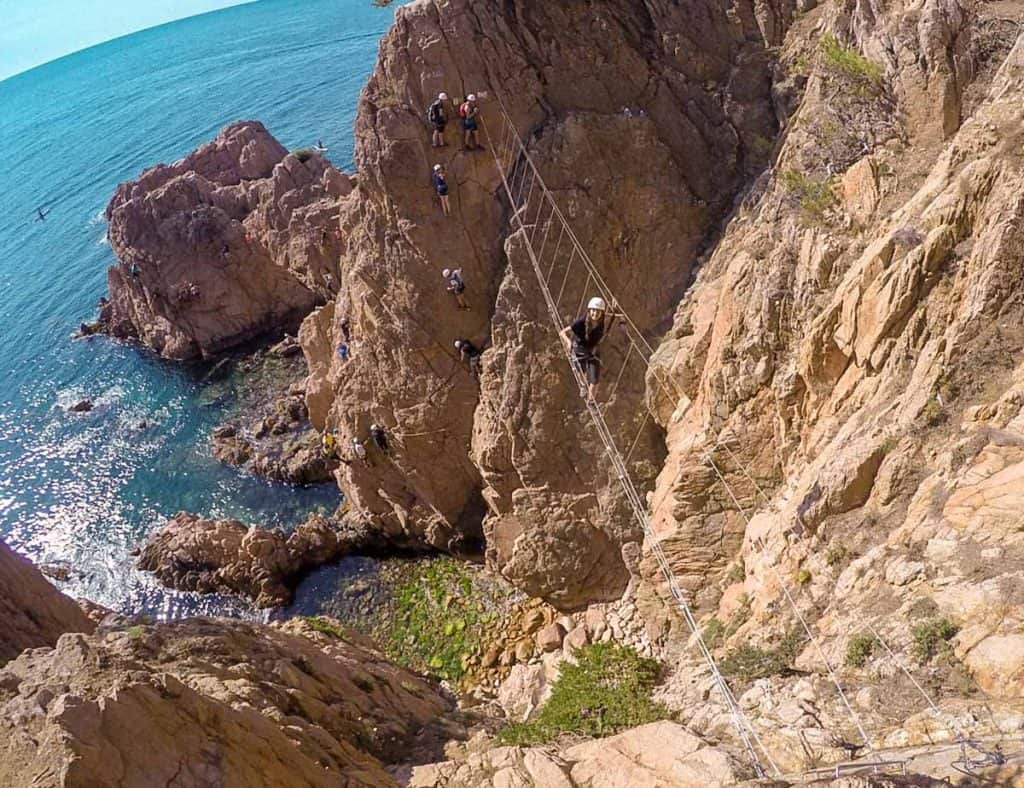
When is the best time to do the via ferrata Cala del Molí
Climbing a via ferrata requires good weather conditions, meaning no rain, ice or snow.
Spring and autumn are ideal for practising this sport in Cala del Molí because you’ll find fewer crowds and the temperatures are not too hot.
However, if you do it during the summer months, be sure to either start early in the morning or late in the afternoon when the sun is less intense.
Another piece of advice is not to do it just after it rains. The route can be slippery and dangerous then.
Basic gear you need to climb a via ferrata in Costa Brava
One of the cool things about this activity is that it is free! Who doesn’t like that?
Well, even though the access is free, you need to be equipped. If you already have experience in climbing via ferratas, you can rent the material and do it independently.
We rented all the equipment to Parc Aventura, managed by the guy who designed and equipped this via ferrata. Otherwise, you can also rent the material from the guys at Aventura Experience.
The essential equipment you need for the via ferrata is:
- Helmet: It protects your head in case of a rockfall.
- Gloves: They protect your hands from friction with the steel cable and rocks. Moreover, they provide a better grip.
- Climbing harness
- Via ferrata set: It consists of two carabiners and a lanyard, which you use to attach the harness to the steel cable.
- Comfortable footwear: Sneakers, trail running or hiking shoes that are not slippery.
If you feel more secure with a guide and don’t want to worry about the material, we recommend joining this guided experience. The groups are small, with at most 8 people, and the price includes the material and an instructor who’ll guide you during the whole experience.
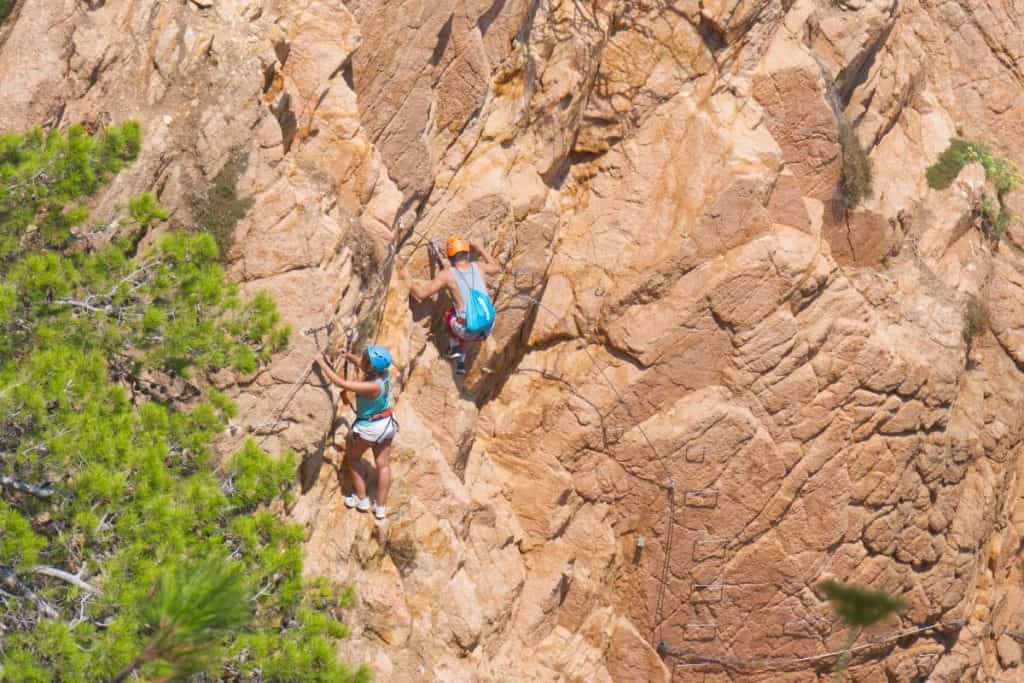
How to arrive at the via ferrata Cala del Molí
🚗 By car
The fastest way to reach Cala del Molí is by car. It only takes 1 h and 20 min from Barcelona, making it an ideal day trip to the Costa Brava. Take the AP-7 highway to Sant Feliu de Guíxols and follow the navigator’s directions to Cala del Molí.
Once there, you can park the car opposite the Triadores lookout (Mirador de las Triadores), where clear signs indicate the start of the via ferrata.
If you’re coming from Girona, it’s even closer, only 40 min by car. You don’t need to take a highway; you follow the C-56 and GIV-6621.
🚎 By public transport
There’s also the option of going by public transport. You can take a bus from Estació del Nord in Barcelona and be in Sant Feliu de Guíxols in 1 h 30 min. The buses run approximately every 2 h and cost around 15 € one way.
From Girona, the buses depart every 30 min, and the total travel time is 45 min. Once you arrive at the bus station, it’s a 30 min walk to the via ferrata’s start (Mirador de las Triadores).
Our experience at the via ferrata Cala del Molí
We dressed with all the equipment at the Mirador de les Triadores, only 50 m from the via ferrata starting point at Cala del Molí.
We did the whole route in 3 hours, but the total duration of the activity can range from 2 h 30 min to 4 h. Time varies depending on how busy the via ferrata is and how experienced you are.
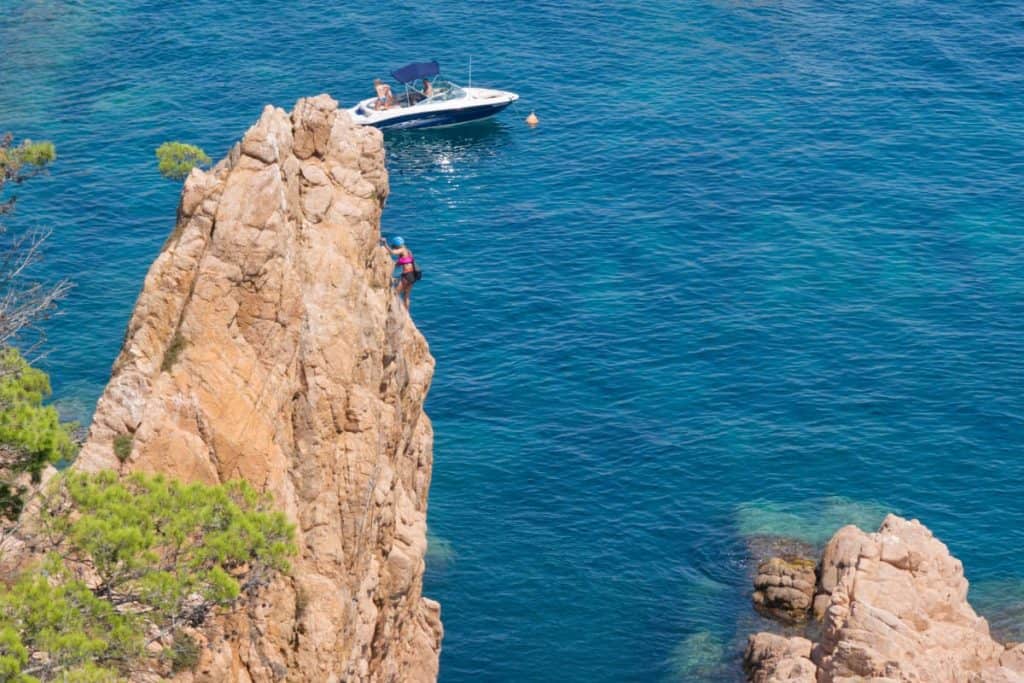
This via ferrata is divided into two parts, the second more difficult. If you’ve just finished the first part and decided you’ve had enough, you can exit it and return to the starting point.
This was the first time we did a via ferrata. After the first part, I (Marina) thought I’d had enough and that maybe via ferratas weren’t made for me. However, after some insistence from Marc, I decided to continue. I can assure you I have a remarkable memory of the second part. I even enjoyed it more than the first one!
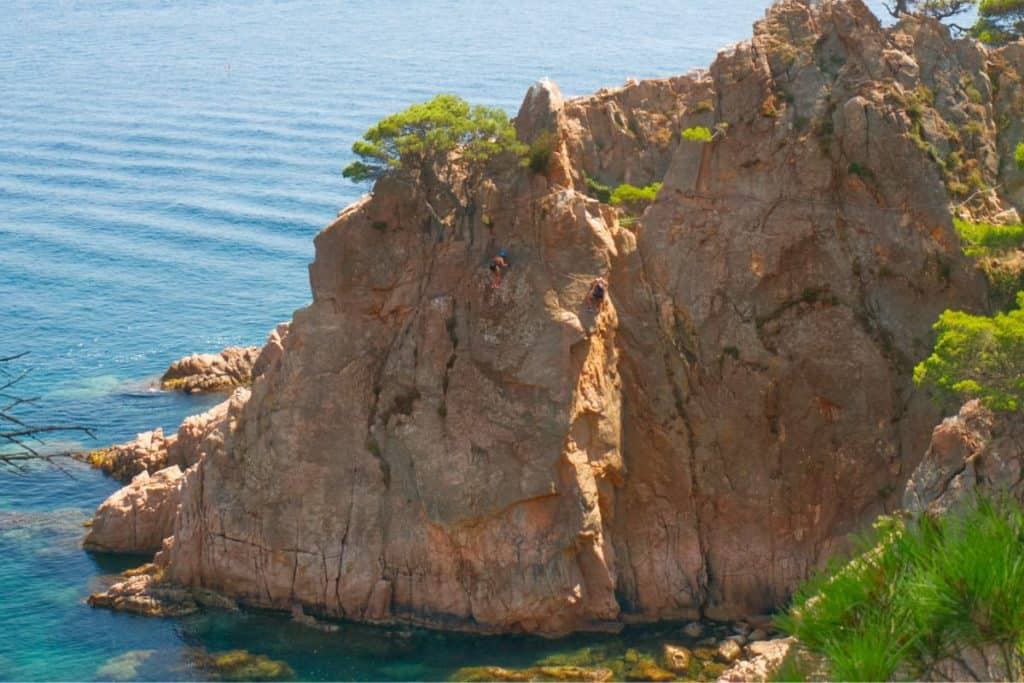
If you love going to the beach but can’t stand laying on a towel for hours, this is a great plan to move your body while enjoying the beach vibes!
More things to do in Costa Brava
We’ve written several posts with adventures to do in the area. Here are some suggestions:
- Seven beaches in the province of Girona that aren’t packed during summer: Get away from the summer crowds by hiking to one of these secluded beaches in the Costa Brava.
- Herbocaiac, a foraging and kayaking adventure in the Costa Brava: A kayaking, snorkelling, and foraging experience in Palamós. You’ll learn about the region’s plants and algae and get immersed in a beautiful landscape while exercising.
- Discovering Tossa de Mar, a historic medieval town in the Costa Brava: Tossa de Mar is a historic city of the Costa Brava, famous for its sandy coves, lighthouse, and fortified medieval village.

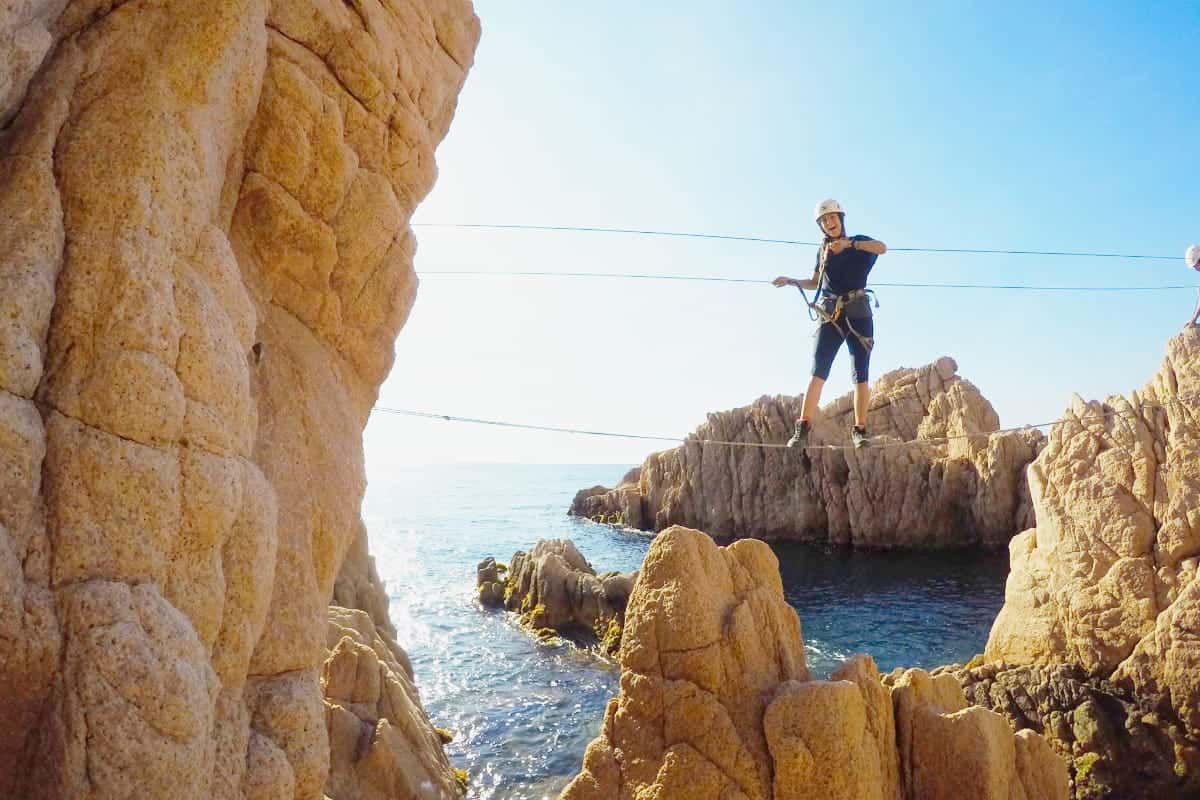
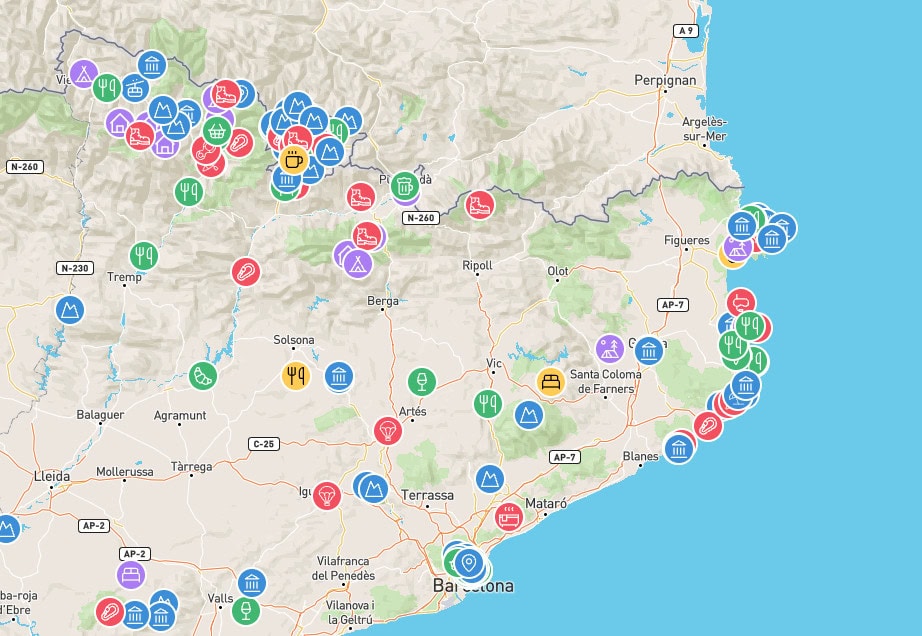
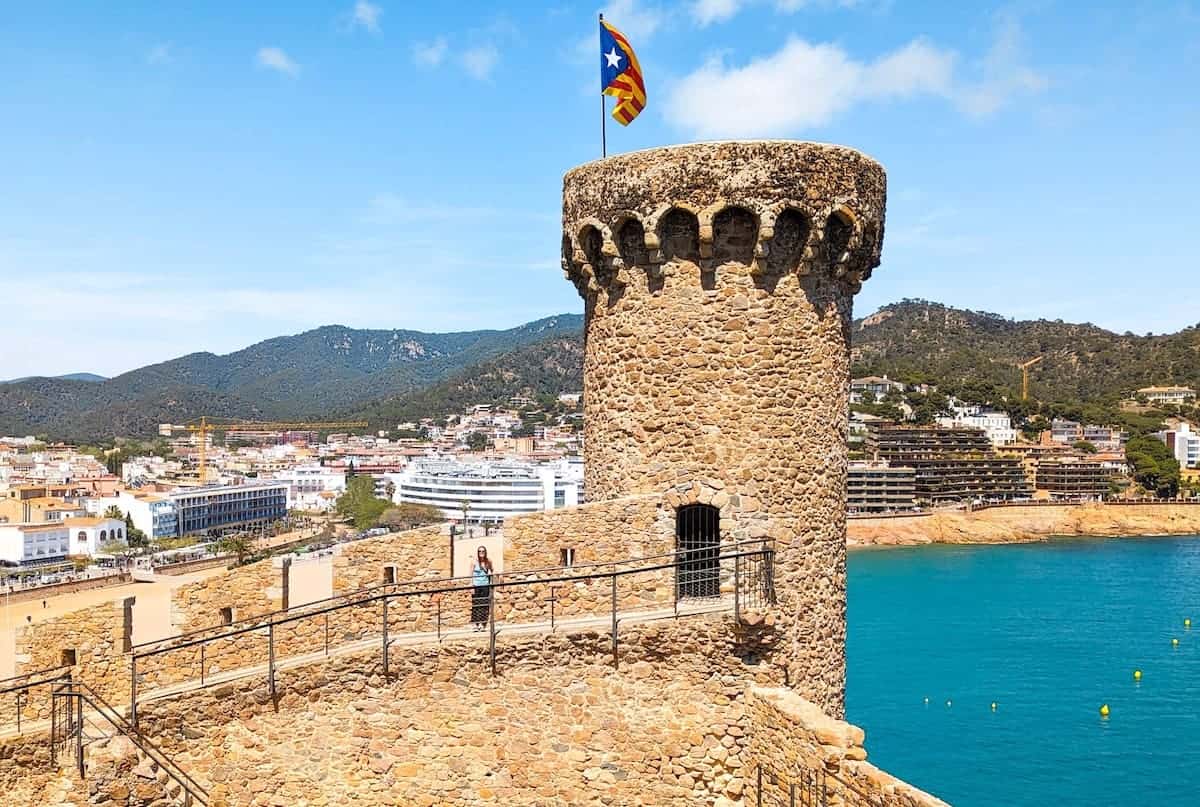

Did you need to rappel at all? Did you do any other via ferrata in Spain?
Hi Andrew!
No, you don’t need to rappel.
We’ve tried other via ferrata in Andorra and Catalonia, and we loved The Via Ferrada Baumes Corcades (not too far from Barcelona) and the Via Ferrada del Salt del Botanal (in the Pyrenees).
That is very helpful! I am thinking about going to Via Ferrada Baumes Corcades… Any details you can provide would be helpful!!
That’s a good choice!
I’d say that it’s always better to go there during the week if you can. This via ferrata can get crowded on weekends, especially when it gets warmer. The town hall has introduced a booking system (free) to avoid lots of people climbing at the same time, so you should book your spot.
Last, read about the via ferrata’s variants (Esperó and Tosquera) in the latest sections and choose the one you want to climb according to your level.
Enjoy the climb 🙂